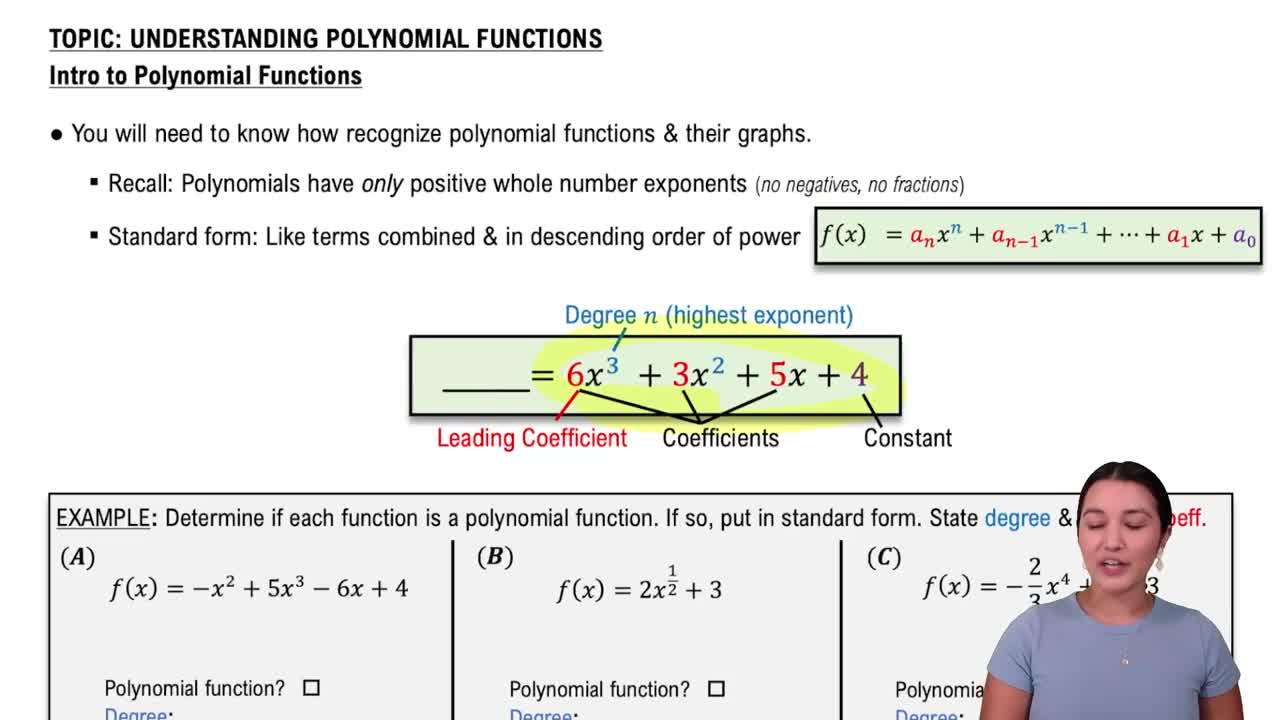Table of contents
- 0. Review of Algebra4h 16m
- 1. Equations & Inequalities3h 18m
- 2. Graphs of Equations43m
- 3. Functions2h 17m
- 4. Polynomial Functions1h 44m
- 5. Rational Functions1h 23m
- 6. Exponential & Logarithmic Functions2h 28m
- 7. Systems of Equations & Matrices4h 6m
- 8. Conic Sections2h 23m
- 9. Sequences, Series, & Induction1h 19m
- 10. Combinatorics & Probability1h 45m
4. Polynomial Functions
Zeros of Polynomial Functions
Problem 27`
Textbook Question
Textbook QuestionIn Exercises 25–32, find an nth-degree polynomial function with real coefficients satisfying the given conditions. If you are using a graphing utility, use it to graph the function and verify the real zeros and the given function value. n=3; -5 and 4+3i are zeros; f(2) = 91
 Verified Solution
Verified SolutionThis video solution was recommended by our tutors as helpful for the problem above
Video duration:
7mPlay a video:
Was this helpful?
Key Concepts
Here are the essential concepts you must grasp in order to answer the question correctly.
Polynomial Functions
A polynomial function is a mathematical expression involving a sum of powers in one or more variables multiplied by coefficients. The general form of a polynomial in one variable is f(x) = a_n*x^n + a_(n-1)*x^(n-1) + ... + a_1*x + a_0, where n is a non-negative integer and a_n is not zero. Understanding polynomial functions is crucial for identifying their properties, such as degree, zeros, and behavior at infinity.
Recommended video:

Introduction to Polynomial Functions
Complex Zeros and Conjugate Pairs
In polynomial functions with real coefficients, complex zeros occur in conjugate pairs. This means that if a polynomial has a complex zero of the form a + bi, where a and b are real numbers, then its conjugate a - bi is also a zero. This property is essential for constructing the polynomial when given complex zeros, as it ensures that the polynomial remains a real-valued function.
Recommended video:

Complex Conjugates
Evaluating Polynomial Functions
Evaluating a polynomial function at a specific point involves substituting the value of the variable into the polynomial expression and simplifying. This process is important for verifying conditions such as f(2) = 91 in the given problem. Understanding how to evaluate polynomials helps in confirming that the constructed polynomial meets the specified criteria and behaves as expected at certain points.
Recommended video:

Introduction to Polynomial Functions
